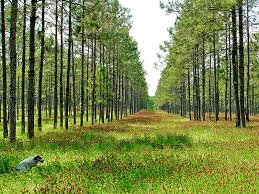Lal Chandan Farming Guide
Lal Chandan, also known as red sandalwood or Pterocarpus santalinus, is a valuable tree species known for its highly aromatic red wood. It is native to southern India and is sought after for its use in traditional medicine, fragrance production, and wood carving.
Climate and soil requirements: Lal Chandan trees thrive in warm and tropical climates. They prefer well-drained sandy or loamy soils with a pH range of 6.5 to 8.5.
Seed sourcing: Obtain high-quality Lal Chandan seeds from reputable nurseries or government-approved sources. The seeds should be viable and disease-free.
Land preparation: Prepare the land by removing weeds, rocks, and debris. Till the soil to a depth of about 30 cm and add organic matter like compost or well-rotted manure to improve soil fertility.
Planting: Lal Chandan trees can be propagated through seeds or by using vegetative methods such as stem cuttings. If using seeds, sow them in prepared nursery beds or seedling trays. Transplant the seedlings to the main field when they are about 6-12 months old.
Spacing and intercropping: Maintain a spacing of around 5-6 meters between Lal Chandan trees to allow for their proper growth and development. Intercropping with compatible species like legumes or medicinal herbs can help utilize the land effectively and provide additional income.
Irrigation and maintenance: Provide regular irrigation during the initial years to promote healthy growth. Lal Chandan trees require moderate watering, and the soil should be kept slightly moist but not waterlogged. Prune the trees periodically to remove dead or diseased branches and promote better wood formation.
Pest and disease management: Monitor the trees regularly for any signs of pests or diseases. Common pests affecting Lal Chandan include bark beetles, termites, and borers. Implement appropriate pest control measures like biological control or organic pesticides to manage infestations.
Legal considerations: Lal Chandan is a protected species under the Indian Forest Act, and its cultivation and trade are regulated. Ensure you have the necessary permissions and follow the legal requirements before starting a Lal Chandan farming venture.
It is important to note that Lal Chandan trees take several years to reach maturity (around 10-15 years), at which point they can be harvested for their valuable heartwood. The heartwood is highly sought after in the timber market and fetches a high price.
Before embarking on a Lal Chandan farming venture, it is advisable to conduct a feasibility study, consider market demand, and consult with local agricultural or forestry experts to ensure a successful and sustainable operation.
Follow to me more details in farming
Click on the link 🔗🖇️👇👇👇
Farming life time guide only 600
Click on the link 🔗🔗🖇️ join now












Comments
Post a Comment